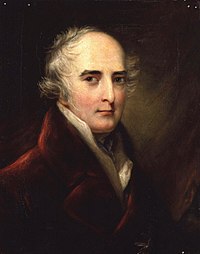John Philip Davis

John Philip "Pope" Davis (1784-1862), a portrait and subject painter, first exhibited at the
His works exhibited at the 1818 Norwich Exhibitions were reviewed in the Norfolk Chronicle :-
Portrait of the Rev. C. Penrice.— A picture of very strong and spirited conception : the countenance manly, but with that mixture of mildness which is among the first difficulties of painting to express.
Portrait of Mrs. Barker. This beautiful portrait, executed with spirit and taste. Mr. Davis's style in female portrait is elegance. He is fond of sun-set effects, and the light is thrown on this fair and gentle form with great knowledge chiaro-scuro, the attitude unstudied yet striking, the eye is mild and mental, and the countenance at once calm and full of sensibility. This picture has been already exhibited at Somerset-house, where we understand it as greatly admired. light.
Portrait of an Artist is an excellent likeness of Mr. Davis, finished with great clearness and delicacy.
Portrait of Capt.
Portrait of Mrs. Gwynn. This is sweet and touching picture : the simplicity of the attitude admirably suited to the countenance — one of the most candid, pure, aud lovely, that we have ever seen.[1]
In 1824 he went to Rome, and painted 'The Talbot Family receiving the Papal Benediction:' whence his cognomen of 'Pope Davis.' He next year received a prize of £50 from the British Institution. With his friend Haydon, he was a great opponent of the Academy, where he did not exhibit after 1843. He died in 1862, and after his death was published his 'Thoughts on Great Painters.' His best-known work is 'The Love-Letter,' exhibited at the British Institution in 1826.
References
- ^ "Norwich Exhibitions". Norfolk Chronicle. 8 August 1818.
 This article incorporates text from a publication now in the public domain: Bryan, Michael (1886). "Davis, J. P.". In Graves, Robert Edmund (ed.). Bryan's Dictionary of Painters and Engravers (A–K). Vol. I (3rd ed.). London: George Bell & Sons.
This article incorporates text from a publication now in the public domain: Bryan, Michael (1886). "Davis, J. P.". In Graves, Robert Edmund (ed.). Bryan's Dictionary of Painters and Engravers (A–K). Vol. I (3rd ed.). London: George Bell & Sons.
